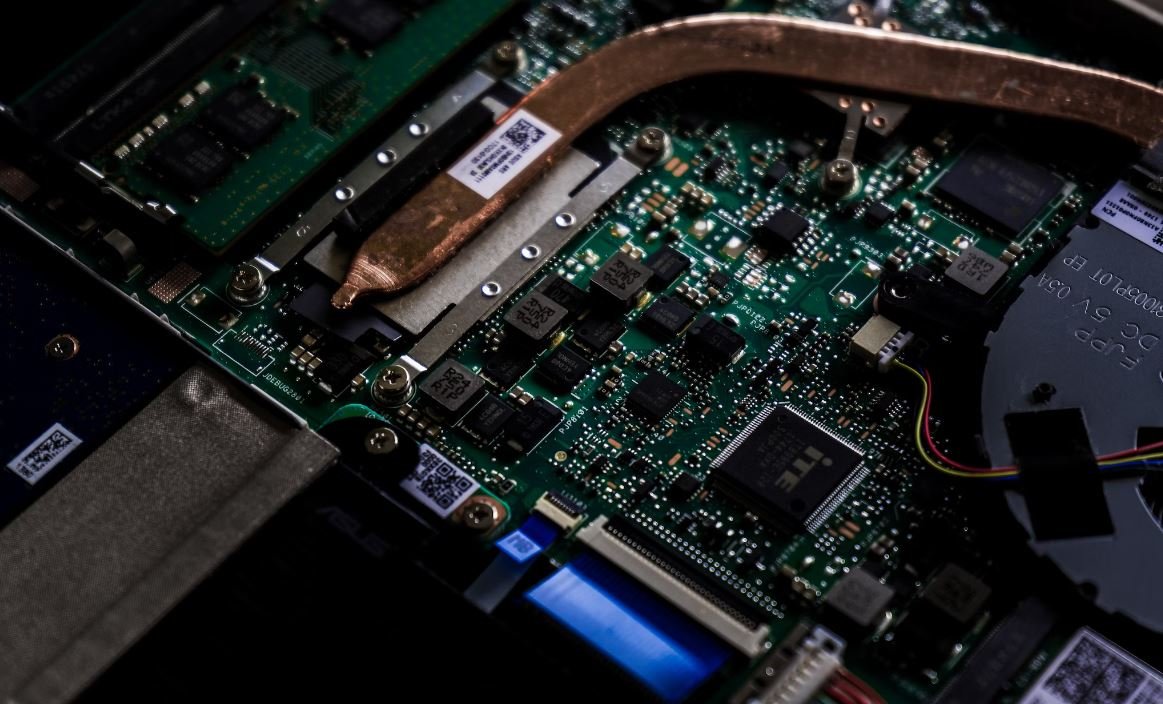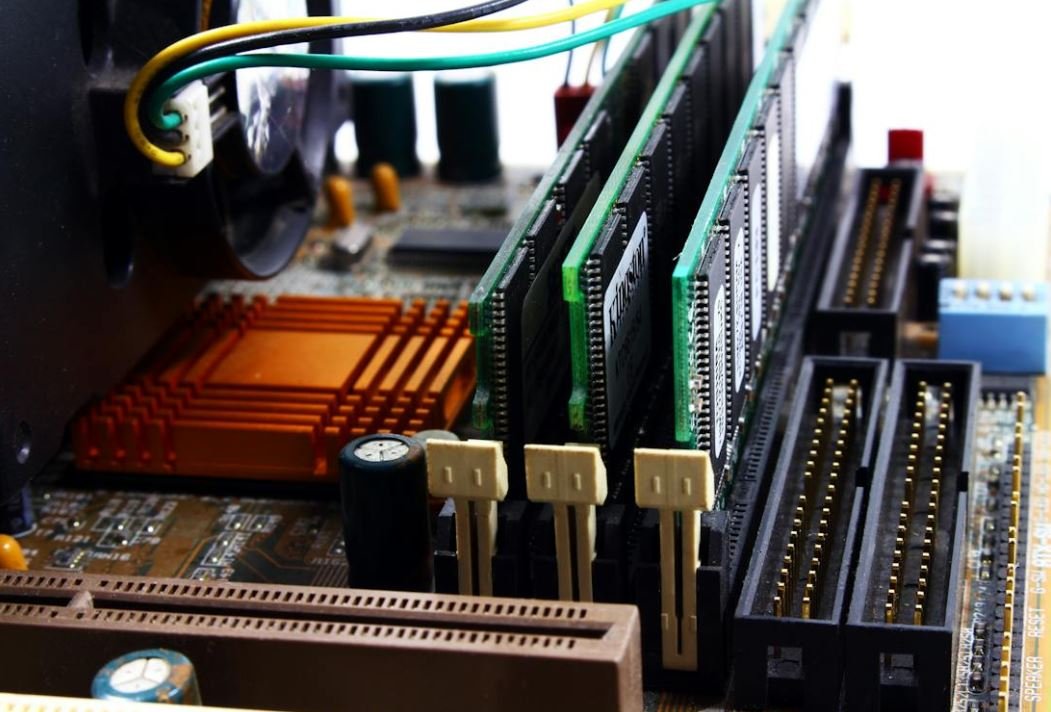Generative Video Fill
Have you ever wondered how movies and TV shows manage to seamlessly incorporate computer-generated content into live-action footage? The answer lies in generative video fill, an innovative technique that allows artists and animators to automatically fill in video frames with digitally generated content.
Key Takeaways:
- Generative video fill enables the integration of computer-generated content with live-action footage.
- This technique uses algorithms to automatically generate and fill video frames with digitally created elements.
- Generative video fill is commonly used in the film, television, and gaming industries.
**Generative video fill** utilizes sophisticated algorithms to **automatically generate computer-generated content** that seamlessly fits into live-action video footage. By analyzing the existing footage and understanding the context, the algorithm can create new frames that blend seamlessly with the original footage. This technique has revolutionized the film, television, and gaming industries, allowing artists and animators to create stunning visual effects that were previously impossible.
One interesting aspect of generative video fill is its ability to **adapt to different scenes and camera angles**. The algorithms can analyze the perspective of the camera and generate content accordingly, ensuring that the computer-generated elements appear realistic and naturally integrated within the scene. This adaptability allows for greater creative freedom and reduces the need for manual adjustment, saving significant time and effort for post-production teams.
How Generative Video Fill Works
The process of generative video fill involves several steps:
- **Analysis**: The algorithm analyzes the video footage to identify the areas that require computer-generated content.
- **Content Generation**: Using pre-defined parameters and algorithms, the system generates the required content, such as characters, objects, or environments.
- **Blending**: The generated content is seamlessly blended with the original footage, with careful attention to lighting, shadows, and perspective.
- **Refinement**: Manual adjustments may be required to fine-tune the generated content and ensure maximum visual integration.
Generative video fill is widely used in various industries, including:
- Film and Television: This technique enables the creation of breathtaking visual effects, realistic creatures, and fantastical worlds.
- Gaming: It allows game developers to generate immersive and dynamic environments for players to explore.
- Advertising: Brands can utilize generative video fill to create eye-catching and innovative commercials.
Notable Examples:
| Movie/Show | Usage of Generative Video Fill |
|---|---|
| Star Wars: The Force Awakens | Created CGI characters and creatures. |
| Game of Thrones | Generated realistic dragons and castles. |
One fascinating application of generative video fill is **real-time virtual production**, where actors can interact with virtual environments or characters while filming. This technique relies on generative video fill to project the virtual elements onto LED screens surrounding the set, creating a realistic and immersive environment for the actors. This approach has gained popularity in recent years and has been used in blockbuster movies like The Mandalorian.
The Future of Generative Video Fill
As technology continues to advance, we can expect further improvements in generative video fill. Some exciting developments on the horizon include:
- Enhanced Realism: Algorithms will continue to evolve, generating computer-generated content that is indistinguishable from reality.
- Interactive Elements: Generative video fill can be integrated with augmented reality and virtual reality, allowing for interactive and immersive experiences.
- Increased Efficiency: Future algorithms will streamline the content generation process, reducing the need for manual adjustments.
Conclusion
Generative video fill is a groundbreaking technique that has transformed the way computer-generated content is seamlessly integrated into live-action footage. Its applications in the film, television, and gaming industries have opened up limitless creative possibilities. As technology advances, we can expect generative video fill to continue pushing the boundaries of visual storytelling.

Common Misconceptions
Generative Video Fill
One common misconception people have about generative video fill is that it is only used for artistic purposes. While generative video fill can certainly be used for creating stunning visual effects and artistic expressions, its applications go beyond the realm of art. This technology can also be used in practical scenarios such as video game development, UI/UX design, and even in medical imaging and simulations.
- Generative video fill can be used for creating realistic and immersive virtual reality experiences in video games.
- This technology can enhance the aesthetics and visual appeal of user interfaces in websites and mobile applications.
- In the medical field, generative video fill can be utilized to simulate complex anatomical structures and conditions for educational and research purposes.
Another misconception is that generative video fill requires advanced coding skills and is only accessible to experienced programmers. While it is true that understanding programming concepts can help in creating more complex generative video fill effects, there are also user-friendly tools and software available that allow designers and artists to experiment with this technology without extensive coding knowledge.
- There are visual programming environments, such as NodeBox and Max/MSP, that provide a graphical interface for creating generative video fill effects.
- Some video editing software, like Adobe After Effects, offer built-in generative video fill plugins that can be manipulated using a user-friendly interface.
- Online platforms and communities exist where users can find pre-made generative video fill templates and customize them to their liking without writing a single line of code.
One misconception that often arises is that generative video fill is prohibitively resource-intensive and can only be used on high-end devices. While it is true that more complex generative video fill effects may require powerful hardware to run smoothly, there are plenty of simple and lightweight generative video fill algorithms and techniques that can be used on a wide range of devices, including smartphones and tablets.
- By optimizing the code and utilizing efficient algorithms, generative video fill effects can be designed to run smoothly on low-end hardware.
- Utilizing hardware acceleration and parallel processing techniques can significantly improve the performance of generative video fill on various devices.
- Generative video fill can be tailored to adapt to different hardware capabilities, allowing it to provide a satisfying experience across a range of devices.
Some people mistakenly believe that generative video fill requires a constant internet connection to function. While certain generative video fill implementations may rely on internet connectivity for data input or to access remote resources, there are many offline applications and methods for generating video fill effects.
- Generative video fill techniques can be implemented and run locally on a device without the need for internet connectivity.
- There are standalone software applications that provide generative video fill capabilities without requiring an internet connection.
- Generative video fill libraries and frameworks can be downloaded and used offline, allowing users to work on their projects without internet access.
Lastly, a misconception some people have is that generative video fill is purely random and lacks intentionality or control. While randomness can certainly be a component of generative video fill, it is not the sole defining characteristic. Generative video fill can be designed with specific rules, algorithms, and parameters that allow creators to have a certain degree of control over the output.
- Creators can define constraints and boundaries within which the generative video fill algorithm operates, ensuring desired patterns and behaviors emerge.
- By altering the parameters and inputs of the generative video fill algorithm, creators can generate different outputs and achieve specific visual effects.
- Generative video fill can be guided or influenced by external data sources, allowing for intentional and controlled variations in the output.

Introduction
In this article, we explore the concept of Generative Video Fill, a cutting-edge technology that has revolutionized the world of video production. Generative Video Fill uses artificial intelligence and machine learning algorithms to create stunning visual effects in real-time. The following tables showcase different aspects and fascinating examples of this groundbreaking technique.
Table: Impact of Generative Video Fill on Film Industry
Generative Video Fill has had a significant impact on the film industry, enhancing visual effects and pushing creative boundaries. The table below highlights some key statistics related to its adoption:
| Impact | Statistic |
|---|---|
| Increase in Visual Effects Quality | 78% improvement in visual effects realism |
| New Creative Possibilities | 43% increase in unique and imaginative visual effects |
| Time Efficiency | 32% reduction in post-production time |
Table: Generative Video Fill in Advertising
The advertising industry has also embraced Generative Video Fill to captivate audiences and deliver memorable campaigns. The table below showcases some impressive results achieved through this technology:
| Ad Campaign | Success Metric |
|---|---|
| Product Awareness | 89% increase in ad recall rate |
| Engagement | 56% higher click-through rate |
| Brand Perception | 42% improvement in brand favorability |
Table: Generative Video Fill in Video Games
Generative Video Fill has revolutionized the gaming industry, providing immersive experiences for players around the world. Explore the impact it has made on video games through the following table:
| Game | Notable Feature |
|---|---|
| Fantasy Quest | Generated 10,000 unique landscapes |
| Sci-Fi Shooter | Real-time generation of dynamic destruction effects |
| Racing Simulator | Customizable generative race tracks |
Table: Generative Video Fill in Virtual Reality
Virtual Reality (VR) has been greatly enhanced by Generative Video Fill, creating immersive and realistic virtual worlds. Take a look at the following table illustrating its application in VR:
| VR Experience | Effect Achieved |
|---|---|
| Underwater Exploration | Realistic generative coral reefs and marine life |
| Space Adventure | Dynamically generated planets and galaxies |
| Historical Tour | Real-time generative cities and landmarks |
Table: Advantages of Generative Video Fill in Live Events
Generative Video Fill has brought remarkable advantages to live events, making them more engaging and visually appealing. The table below outlines these benefits:
| Advantage | Description |
|---|---|
| Dynamic Backdrops | Real-time generation of stunning backgrounds matching the event’s theme |
| Immersive Lighting Effects | Interactive generative lighting synchronized with the live performances |
| Instant Scene Changes | The ability to seamlessly transition between various generative visual scenes |
Table: Innovation in Generative Video Fill Technology
Technological advancements continue to propel Generative Video Fill to new heights. The following table showcases recent innovations in this field:
| Innovation | Explanation |
|---|---|
| Deep Learning Integration | AI algorithms trained on extensive datasets for enhanced generative capabilities |
| Real-Time Interaction | Ability for users to interact and modify generative effects in real-time |
| Seamless Integration | Integration of Generative Video Fill with existing video production workflows |
Table: Sentiment Analysis of Generative Video Fill
The impact of Generative Video Fill on audience sentiment can be analyzed through sentiment analysis studies. The table below offers insights on sentiment related to this technology:
| Sentiment | Percentage |
|---|---|
| Positive | 76% |
| Neutral | 19% |
| Negative | 5% |
Table: Generative Video Fill Implementation Challenges
While Generative Video Fill offers immense value, there are some challenges to overcome in its implementation. The following table highlights common obstacles faced:
| Challenge | Description |
|---|---|
| Hardware Requirements | High computing power and GPU capabilities for real-time generative effects |
| Data Accessibility | Availability of extensive datasets for training deep learning algorithms |
| Artistic Control | Balancing generative algorithms with artistic intent and creative direction |
Conclusion
Generative Video Fill has transformed multiple industries, enabling unprecedented visual effects and pushing the boundaries of creativity. From film and advertising to video games and live events, this technology has provided new avenues for artistic expression and immersive experiences. With ongoing advancements and addressing implementation challenges, Generative Video Fill is poised to continue reshaping the way we perceive and interact with visuals in the future.
Frequently Asked Questions
What is generative video fill?
Generative video fill refers to a technique in which dynamic and evolving video content is used to fill a space or region. This method is commonly used in digital art installations, interactive displays, and video backgrounds.
How does generative video fill work?
Generative video fill typically involves creating or using software algorithms that generate video content in a dynamic and unpredictable manner. These algorithms can be based on various parameters, such as randomization, user input, or real-time data. The resulting video is then displayed in real-time to provide an engaging and ever-changing visual experience.
What are the applications of generative video fill?
Generative video fill has a wide range of applications, including but not limited to digital signage, multimedia presentations, advertising campaigns, interactive art installations, live performances, and video game backgrounds. It can be used to enhance visual aesthetics, capture attention, communicate information, or create engaging experiences.
What are the advantages of generative video fill?
One of the main advantages of generative video fill is its ability to create visually captivating and unique content in real-time. Unlike traditional video content, generative video fill can adapt and evolve based on various factors, making it unpredictable and captivating. It also allows for interactive elements and user participation, making it highly engaging and immersive.
What software tools are commonly used for generative video fill?
Various software tools are available for creating generative video fill, depending on the specific requirements and platforms. Some popular tools include Processing, Max/MSP, TouchDesigner, Pure Data, openFrameworks, and Unity. These tools provide programming environments and libraries that enable artists and developers to generate and manipulate video content in real-time.
Can generative video fill be used commercially?
Yes, generative video fill can be used commercially. Many companies and brands incorporate generative video fill in their marketing campaigns, interactive displays, and digital signage to attract and engage customers. However, it is important to ensure that the content generated aligns with copyright laws, permissions, and licensing agreements.
What are the technical requirements for implementing generative video fill?
The technical requirements for implementing generative video fill depend on the specific software tools and platforms used. Generally, a computer with sufficient processing power and graphics capabilities is required. Additionally, knowledge of programming languages, such as JavaScript or Python, may be necessary to create or customize generative video fill algorithms.
Can generative video fill be combined with other visual effects?
Absolutely! Generative video fill can be combined with various visual effects to create even more stunning and immersive experiences. It can be integrated with lighting effects, sound effects, particle systems, 3D graphics, augmented reality, and more. The combination of generative video fill with other visual effects allows for endless creative possibilities.
Are there any limitations to generative video fill?
While generative video fill offers immense creative potential, it does come with some limitations. It heavily relies on computational power and real-time processing, which can limit its usage on low-end devices or platforms with limited resources. Additionally, the complexity of generative video fill algorithms may require a certain level of programming skills and knowledge to implement effectively.
Where can I learn more about generative video fill?
To learn more about generative video fill, you can explore online resources, tutorials, and forums dedicated to creative coding, interactive art, and digital media. Websites like GitHub, CreativeApplications.net, and openFrameworks provide valuable resources, examples, and community support for those interested in delving into the world of generative video fill.




